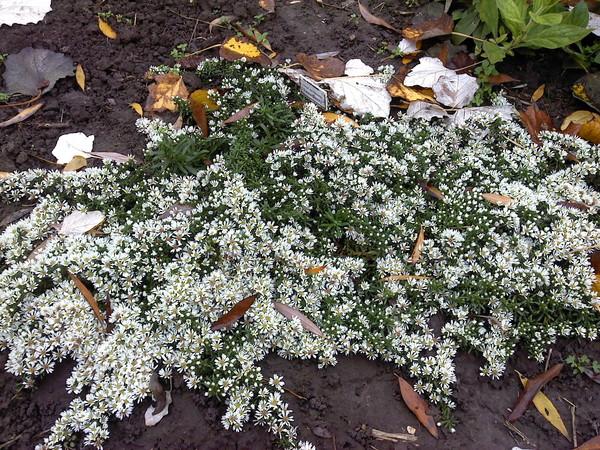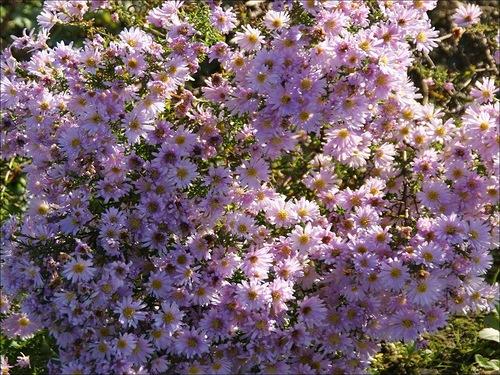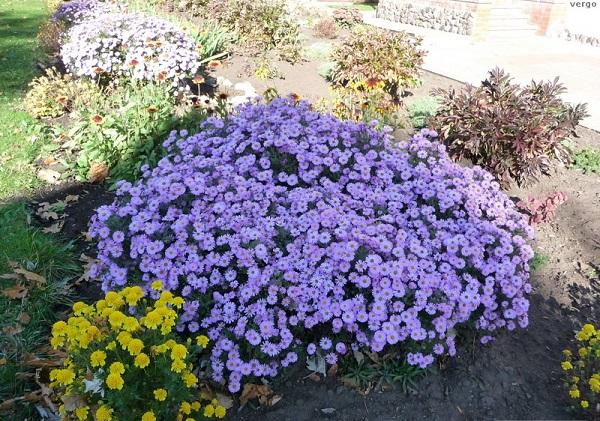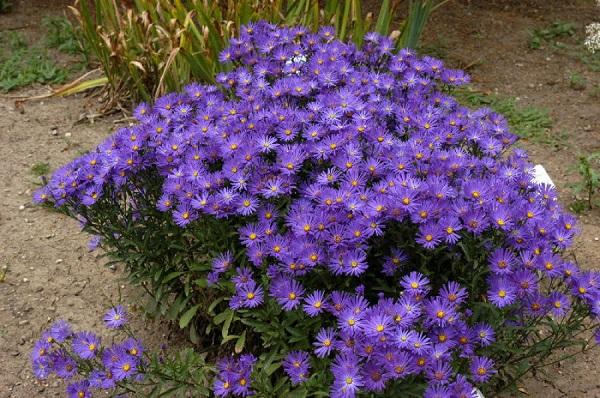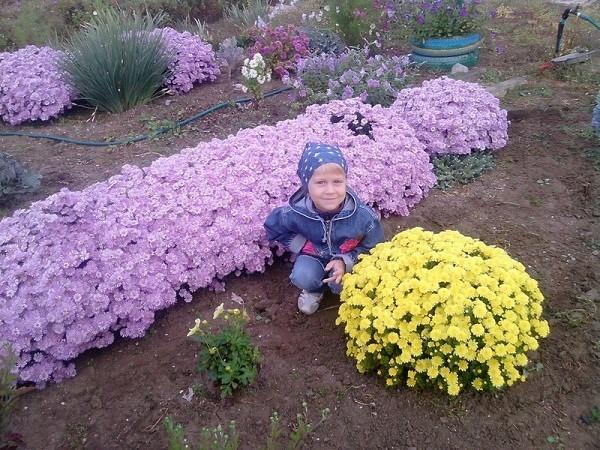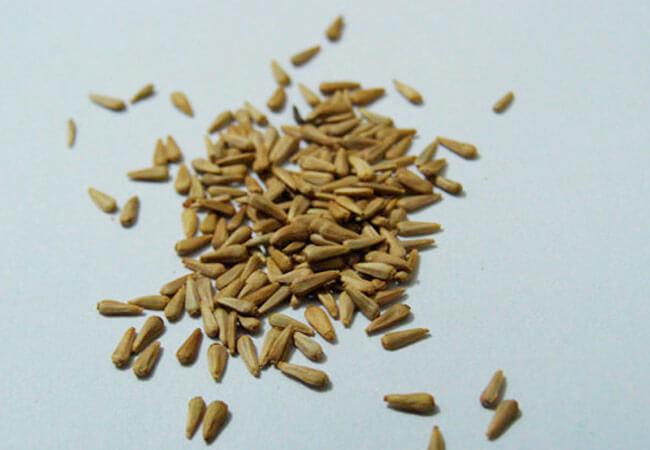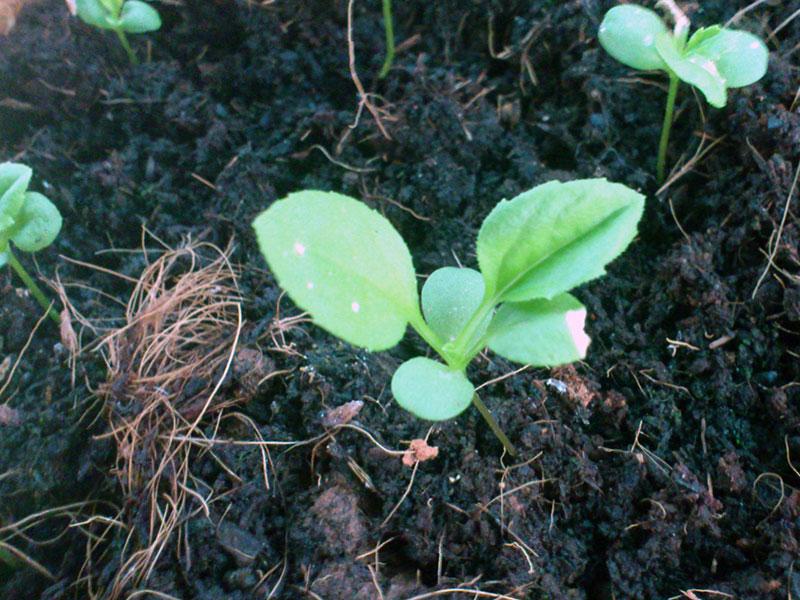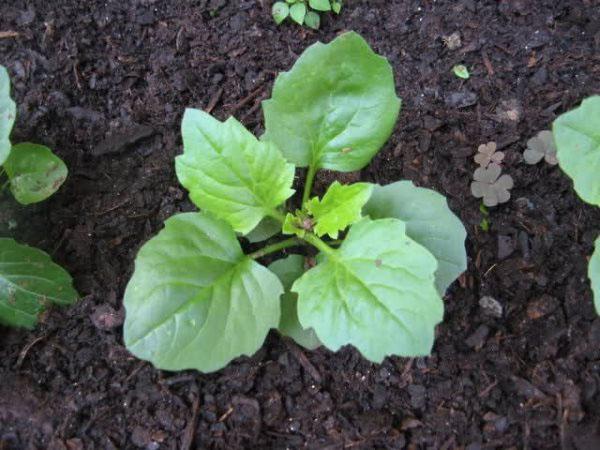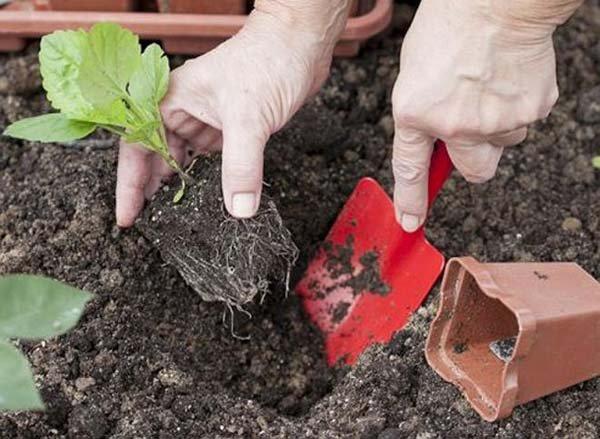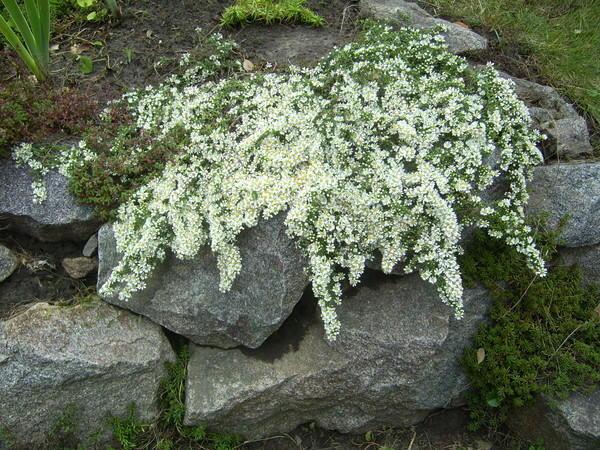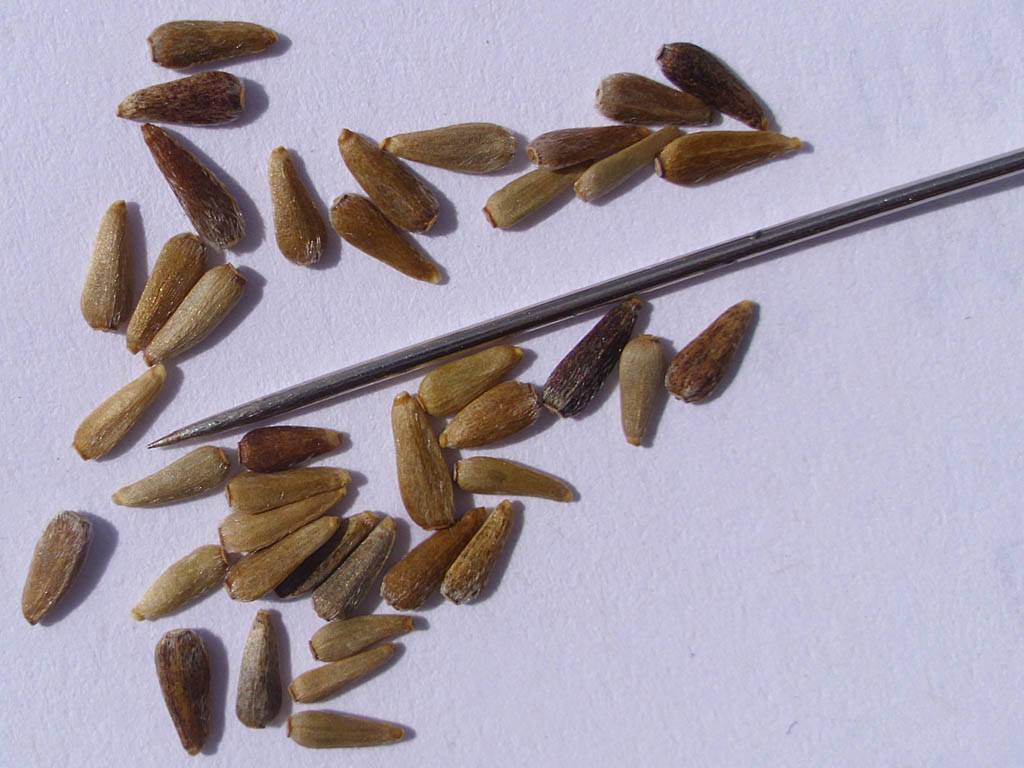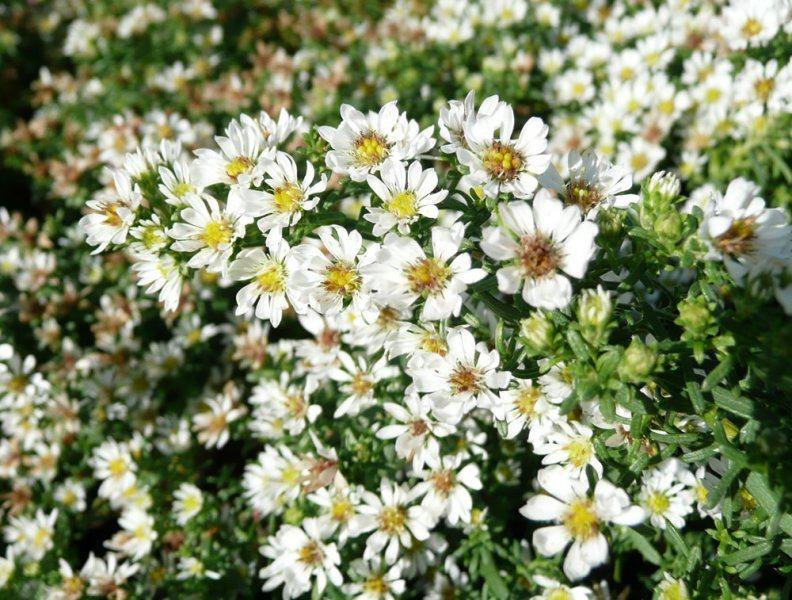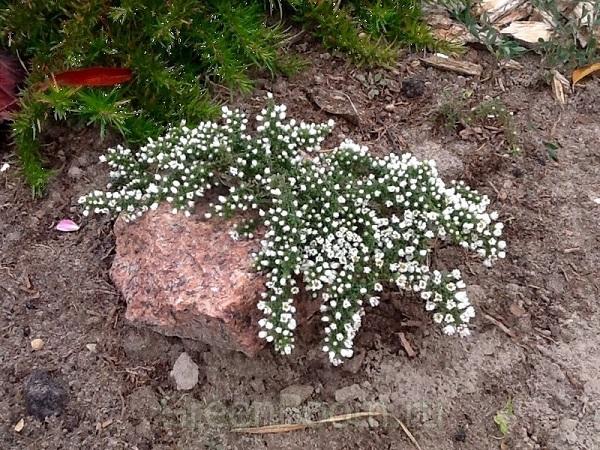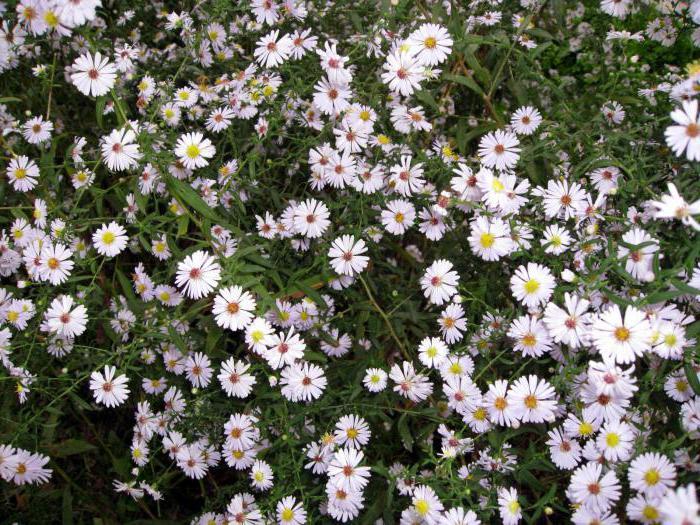It is difficult to find the heather aster in Russian gardens. In Russia it is not very popular. But flower growers in the USA and Canada love this perennial for its unpretentiousness, frost resistance and decorativeness. In autumn, it decorates the garden with abundant blooms and fills it with a delicate aroma.
- Description of the flower
- Varieties of Aster teriflorus
- Pink Cloud (Pink Cloud)
- Snow flurry
- Herbstmyrthe
- Erlkonig
- Blue star
- Lady in Black
- Golden Spray
- Growing
- From seeds
- Seedlings
- Landing
- Selecting a location
- Soil preparation
- Planting rules
- How to care for heather aster
- Reproduction technique and seed collection
- Seeds
- Cuttings
- Dividing the bush
- Diseases and pests
- Application in landscape design
Description of the flower
The heather aster is found naturally in North America. The variety consists of perennial herbaceous plants that bloom from September to November. Bushes are formed from long (70-100 cm) branched shoots, bare or pubescent. The entire length of the stems is covered with leaves. In the upper part they are jagged, small (up to 1.5 cm long), alternate. Below up to 6 cm long, palmate, hard. The bushes look fluffy due to their thick dark green foliage.
Heather aster is classified as a frost-resistant (down to -35 °C) ground cover crop. The bushes are aggressive. They quickly grow in width and have the shape of a ball. To maintain the decorative effect of garden compositions, control is necessary.
The culture belongs to the small-flowered species. The diameter of the inflorescences (baskets) does not exceed 1 cm. The shape of the involucre is bell-shaped. The marginal petals are pointed, lanceolate, arranged in 3 rows. Color: white, blue, pink.
The center is yellow-brown or brown with a red tint. At the peak of flowering (September-October), dense pyramidal (oval-pyramidal) bushes are covered with a continuous carpet of small flowers. The seeds are small, flat, and do not have time to ripen due to late flowering.
Varieties of Aster teriflorus
The advantages of the perennial variety of asters include abundant flowering, which can last up to 2 months. The shape of the bushes of many varieties of heather aster is creeping. This quality is used by landscape designers. The crop is included in compositions that require ground cover and creeping plants.
Pink Cloud (Pink Cloud)
During flowering (from September to November), spherical bushes are strewn with pale pink small baskets. Heather aster Pink cloud remains decorative until frost.
Snow flurry
The name is true. During flowering, low bushes (10 cm) Snow flurry are covered with many white flowers and resemble a snow blanket. Gardeners plant Snow Avalanche on rocky hills. In summer it forms a dense carpet of dark green color and blooms closer to autumn.
Herbstmyrthe
Hybrid form with shoots up to 1 m long. Inflorescences are white-lilac, small, 10 mm in diameter. The core of the flowers is yellow with a burgundy tint. Herbstmyrthe begins to bloom in September. Finishes in 1.5 months.
Erlkonig
The center is bright yellow, the marginal petals are pale purple. Ground cover bushes with branched shoots up to 1 m long. Erlkonig blooms for 2 months from early September to November.
Blue star
A creeping variety of heather aster. The average height of the bush is 70 cm. During flowering, Blue star resembles heather and low-growing conifers due to its small, needle-like foliage. Flowering continues from August until the first frost. The flowers are pale blue.
Lady in Black
This variety is distinguished by its unusual leaf color. It is dark green and dark purple in places. The flowers are small, white with a pink-brown center. Lady in Black is used in group plantings as an ornamental ground cover crop.
Golden Spray
The bushes are dense, pyramidal in shape. The center is bright yellow, contrasting with the white marginal petals. The flowers are small.
Growing
All varieties of heather aster love sun or light partial shade. All soils are suitable for them, with the exception of clayey and waterlogged ones.
From seeds
Heather asters grown from seeds begin to bloom in their second year. They are sown in spring or before winter. Peat and humus are added to the soil. Aster seeds are sown in furrows to a depth of 1 cm. The bed is mulched with humus or compost.
In spring, heather aster shoots appear by the end of the second week. Grown seedlings are thinned out (dive), leaving a distance of 15 cm between them. Asters are transplanted in the fall.
Seedlings
Heather aster seeds are sown for seedlings in March. They are first germinated in a damp cloth. Planted in a common container (container, box). The seeds are buried 0.5 cm. The container is covered with film and kept warm (20 °C).
After the sprouts of the heather aster appear, the film is removed and the box is transferred to a bright place. During the period of seedling growth, the air temperature is maintained at +18 °C during the day and +15 °C at night. Heather aster seedlings dive in the 3rd leaf phase.
Standard care:
- watering;
- creating an optimal microclimate;
- fertilizing with complex fertilizers.
Landing
Heather aster seedlings are considered ready for transplanting to a new place when 6 leaves are formed on it and the height reaches 7 cm. They are hardened for another 2 weeks, then it quickly adapts to open ground conditions.
Selecting a location
In the shade, the crop often gets sick. Due to weakened immunity, it is subject to frequent attacks by insects. The heather aster, planted in a sunny place, pleases with abundant flowering. Calendula is considered a good predecessor to perennials.
Flower growers do not recommend planting aster after tulips and gladioli.Gardeners note that plants planted in the southern part of the garden bloom earlier and bloom more abundantly.
Soil preparation
Heather aster grows best on loam that is fertilized before planting. Organic matter (humus) is added to the soil. Do not forget about the standard set of fertilizers:
- superphosphate;
- potassium salt;
- urea (only in spring).
Acidity is reduced with dolomite flour. High humidity is controlled with a layer of crushed stone or other drainage.
Planting rules
Seedlings are planted in open ground in May. Maintain an interval of 15-25 cm, and at least 0.5 m between two rows. After planting, the holes are watered and mulched with humus. During the first week, the heather aster is not watered.
Heather aster seedlings planted on a cloudy day take root faster. If the days are sunny, the flowerbed is covered with agrospan, cardboard or other available material that does not allow sunlight to pass through. The shelter is removed on the 3-5th day.
How to care for heather aster
Heather aster requires minimal care. With the right choice of location and filling the soil, the perennial blooms profusely for 5 years, subject to the following rules:
- watering when the top layer of soil dries out;
- shallow loosening;
- weed removal;
- pruning faded inflorescences.
Reproduction technique and seed collection
Heather aster is propagated vegetatively and by seeds. It is difficult to obtain your own seed material. For them to ripen, at least 50 days must pass from the time of flowering. In a temperate climate in open ground this is unrealistic.
Seeds
You get your heather aster seeds in two ways.One option is easy to implement, but does not guarantee germination, the second is more labor intensive, but allows you to obtain high-quality seed material:
- Cut off the inflorescences before the first frost. Place it on the windowsill. Wait until the seeds ripen.
- Dig up a bush. Plant it in a pot or bucket. Bring it into a room where the temperature does not rise above +20 °C. Provide the plant with adequate care and lighting. Collect ripened seeds.
Cuttings
The method allows you to preserve varietal characteristics. You can cut asters all summer long. For rooting in the garden, prepare a small ridge, fill it with earth, peat, sand (2: 1: 1). Algorithm for propagating asters by cuttings:
- Cut a 7 cm long piece from the top of the shoot.
- Plant in a greenhouse, deepening it by 3-4 cm.
- Water.
- Cover the ridge with film.
- After a month, the seedlings can be transplanted.
Dividing the bush
This method is used to propagate aster bushes at the age of 3-4 years. They just need to be transplanted to a new place. The division of the bush is carried out in the autumn:
- they dig up the bush from all sides and take it out;
- The rhizome is divided into parts with pruning shears;
- The divisions are planted in prepared holes and watered.
Just before frost, the bushes are covered. For this purpose, agrospan, lutrasil or organic covering materials (spruce branches, straw, leaves) are used.
Diseases and pests
The perennial rarely gets sick. The disease can be caused by poor care or weather disasters. The decorative appearance of the heather aster can be damaged by insects:
- nematodes;
- spider mite.
Leaves affected by the nematode are torn off and destroyed. Aster can be saved from spider mites by infusion of onion peel or by treatment with an insecticide.
Heather aster growing in the shade and not receiving proper care is susceptible to fungal infections:
- powdery mildew;
- gray rot;
- ring spot.
Sick plants are treated with copper sulfate (grey rot), “Fundazol” (spotting).
Application in landscape design
Heather aster is valued as a ground cover crop. It is used in rock gardens and park areas in combination with conifers. Low-growing varieties are planted next to Iberis and cloves. Tall varieties go well with rudbeckia and decorative yarrow.
Single plantings of heather aster look dignified and beautiful. Designers give lush bushes the correct geometric shape (ball, cone). An ornamental perennial planted in a garden will decorate it for many years without requiring much care.

